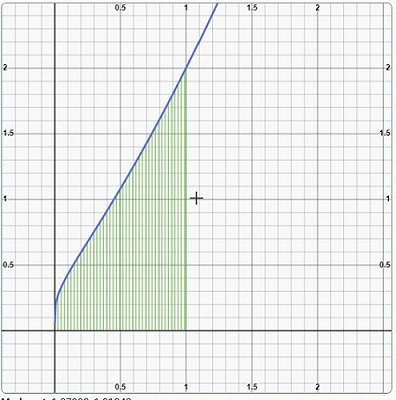| Line 4: | Line 4: | ||
<center><math>\int_{0}^{1}\frac{x^2-1}{ln(x)}\ dx</math></center> | <center><math>\int_{0}^{1}\frac{x^2-1}{ln(x)}\ dx</math></center> | ||
| − | The graph of this function looks like this: [[Image: graphST.jpeg]] | + | The graph of this function looks like this: |
| + | <center>[[Image: graphST.jpeg]]</center> | ||
| + | |||
| + | The antiderivative of this function may turn out to be ugly as it involves solving with the exponential and logarithmic integral, but this function can be solved if we using differentiation under the integral sign. Therefore, let's define a more basic function: | ||
| + | <center>F(b) = <math>\int_{0}^{1}\frac{x^b-1}{ln(x)}\ dx</math></center> | ||
Revision as of 01:04, 3 December 2020
Worked Solution using Feynman's Technique
To provide a better understanding of how Feynman's technique, here is another example. Let this function:
The graph of this function looks like this:

The antiderivative of this function may turn out to be ugly as it involves solving with the exponential and logarithmic integral, but this function can be solved if we using differentiation under the integral sign. Therefore, let's define a more basic function:

